6 luxury ecommerce strategies for creating elegant online experiences
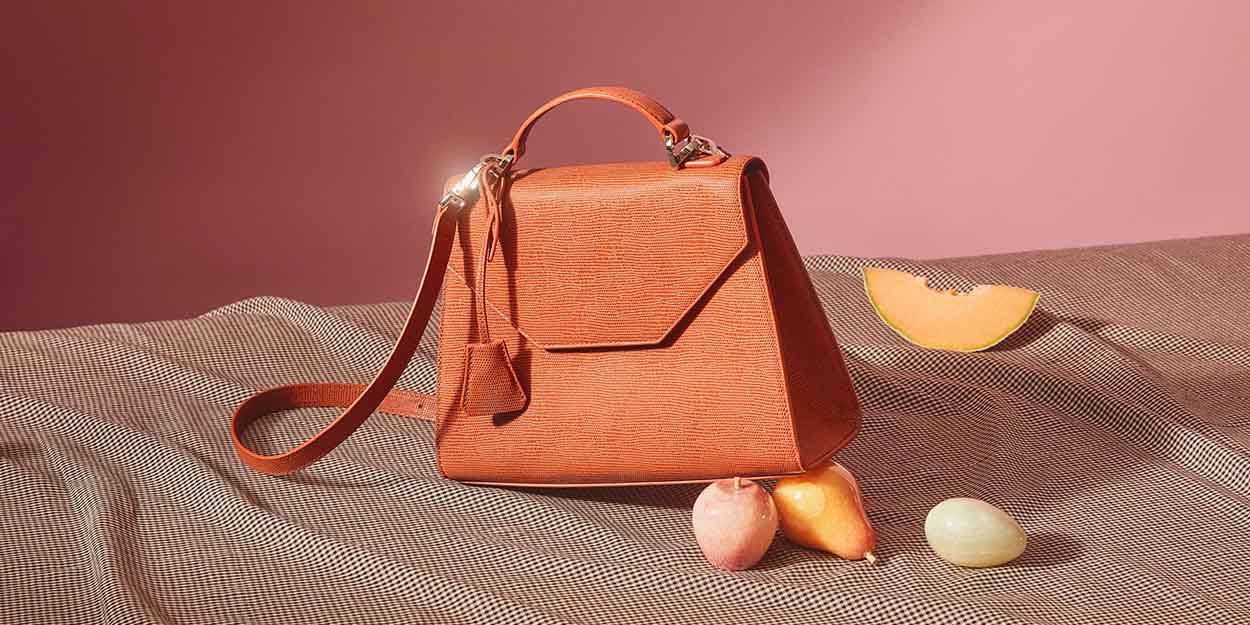
Luxury brands have finally embraced ecommerce's power to drive sales, foster connections, and inspire clientele. The top brands are investing in creating luxury digital experiences that match the service and glamour of their brick-and-mortar stores. But how should these look? How can you deliver the luxury ecommerce experience your customers expect? From customer service to visualization to hyped launches to strategic exclusivity, here are 6 key areas to focus on.
As retail has undergone a seismic shift to ecommerce, some luxury brands have been hesitant to follow suit.
The luxury industry is steeped in heritage and tradition. The chic, the mystique, and the luxuriousness of the in-person experience was what set luxury shopping apart.
Could it be done online? Was it even worth trying? Or was online unbecoming for the luxury brand culture?
The question is no longer theoretical: for luxury brands, online shopping isn’t a novel experiment or competitive advantage anymore —it’s a business necessity.
Online luxury purchases have skyrocketed over the past couple years:
- Gen Z and Millennials now account for almost 50% of luxury purchases
- 60% of luxury brands now have an online presence
- Bain & Co. forecasts 30% of all luxury sales will take place online by 2025
Even for traditional in-store purchases, the luxury digital experience plays a major role. 90% of luxury shoppers use online platforms at some point during their shopping journey.
So even if a sale is made in-person, it’s been influenced by one or several online touchpoints.
An online presence is a necessity, not a luxury. So how are brands taking the luxury customer experience into ecommerce?
How can you deliver the elegant, exclusive shopping experience today's luxury buyers expect?
Here are 6 key areas to focus on.
6 luxury ecommerce strategies
- Appeal to visual instincts of shoppers
- Take the luxury customer service experience online
- Collaborate, drop & launch luxury products online
- Deliver a seamless luxury ecommerce experience, no matter the demand
- See digital as a source of sales and inspiration
- Create exclusive luxury online shopping experiences
Entering a luxury store often feels like entering an art gallery. The high ceilings. The gold-accented display cabinets. The spotlit products. The careful and deliberate curation of space.
Opulent stores are a cornerstone of the luxury customer experience. They bring customers into the beautiful, lavish world of the brand, and let customers take home a small piece of that world by buying products.
But how do you achieve this online? How do you immerse customers and create the desire that luxury stores inspire?
High-quality photos are of course a must. But go beyond straightforward photos. For example, add 360-degree views of products and videos of the product in use.
As one luxury shopper looking to purchase a scarf told Nielsen Norman Group:
“I like how Hermès shows you how you can tie it. It lets me think about whether or not I’d use it in this way. Other luxury websites don’t show you this, which might deter me from buying the item because you don’t know how to style it. I feel like Hermès is the only website I’ve seen that does this. They’re doing a great job showing the different ways you can style this, and that isn’t always the case on most luxury websites.”
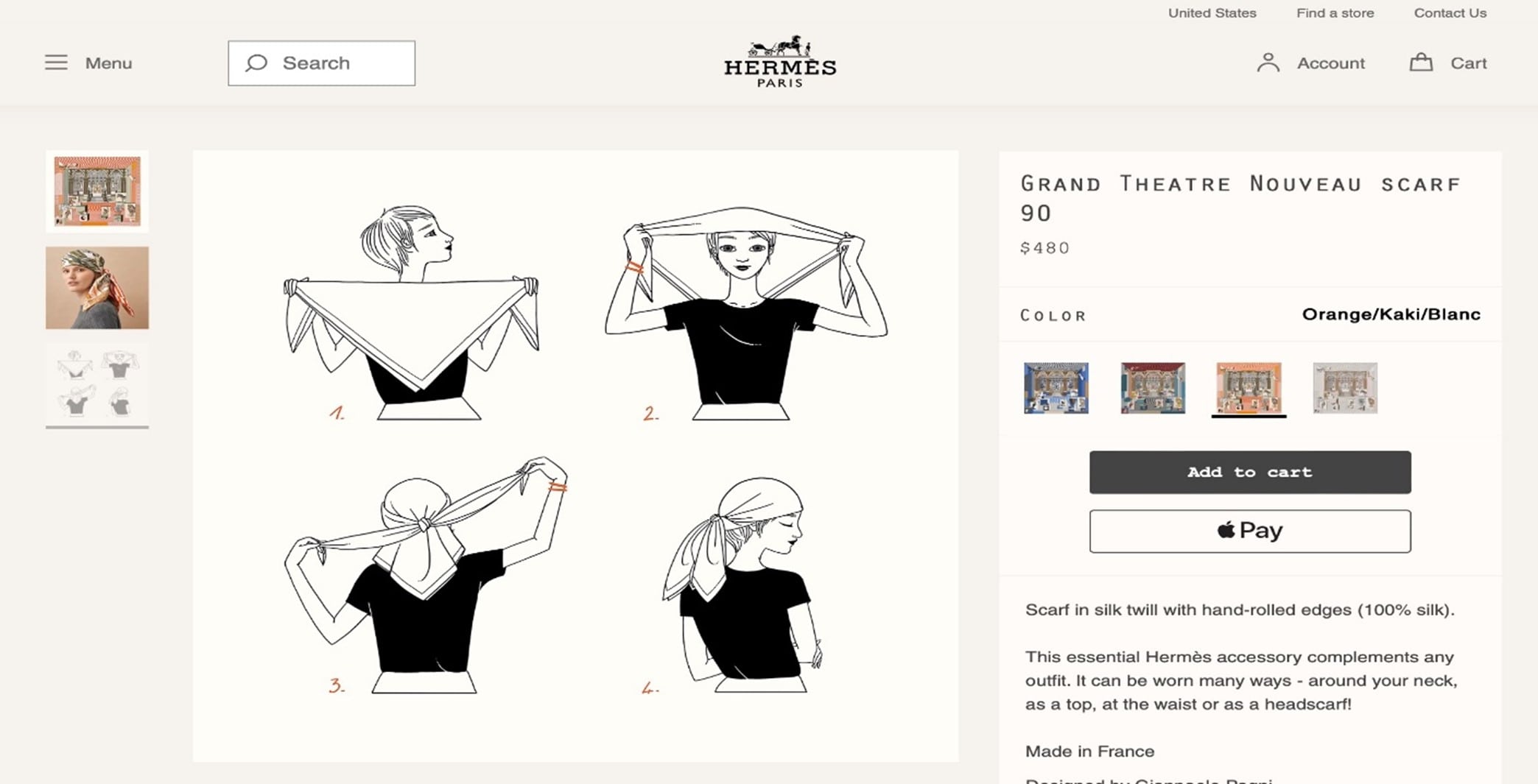
Leaders in the field have also incorporated augmented reality to help shoppers connect with the products. Lancôme, for instance, lets shoppers see how lipstick and other cosmetics look on them.
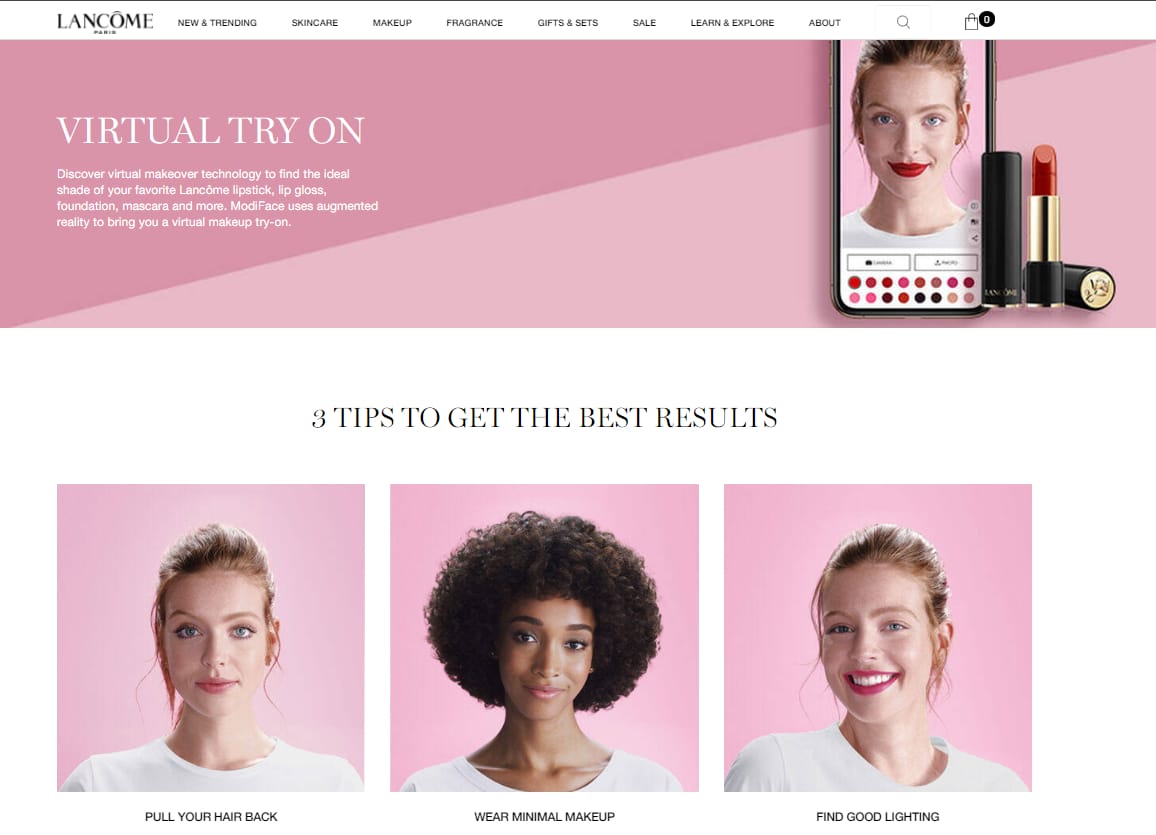
And Gucci’s luxury fashion ecommerce app lets clients try on shoes virtually.
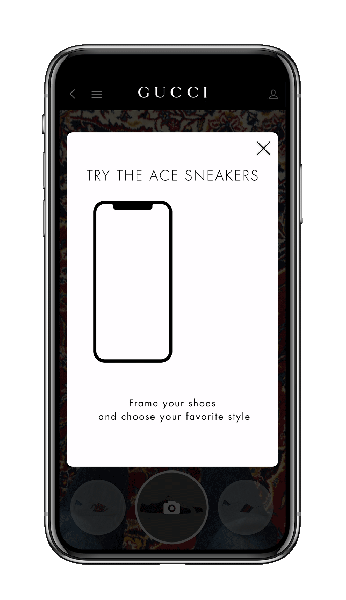
Livestreaming also adds a flashy new visual channel to luxury retailers’ toolkits.
Chinese shoppers, in particular, have responded enthusiastically to livestreaming. 28 million people livestreamed a Burberry fashion show on Tmall China. This led many luxury fashion products to sell out within the hour.
China’s digital adoption is further along than the West. So what works there signals what we might see in the future of luxury.
RELATED: Staggering Singles’ Day Facts Every Retailer Should Know
Livestreaming taps into the existing ecommerce trend of influencer marketing and brand ambassadors. For example, Clinique used actress Emilia Clarke’s reach to livestream to her Instagram audience. Clinique created yet another digital touchpoint with its brand and another opportunity for customers to engage with its products.
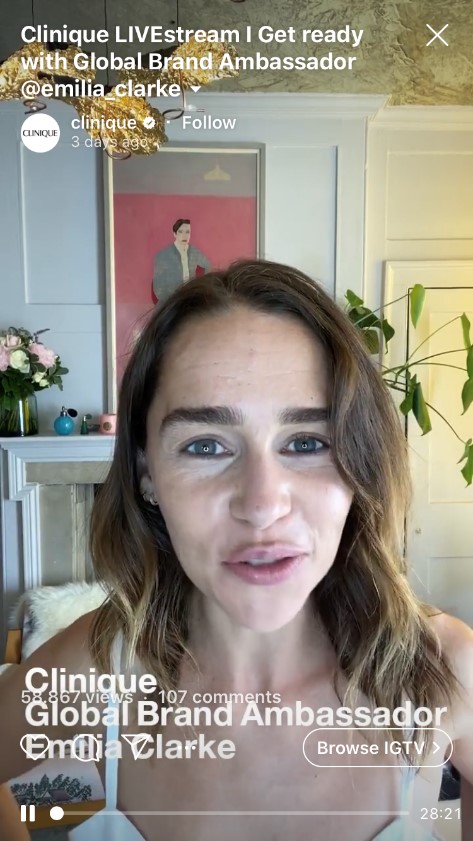
Customer service is an area where luxury retailers excel. Service is what distinguishes luxury from other verticals, according to high-end shoppers.
“One of the key changes in the definition of luxury is that affluent consumers are much more focused on quality and customer service than they are on the craftsmanship of physical products,” says Luxury Institute CEO Milton Pedraza.
“A superior experience for the customer depends on personal interactions with a brand, and more important than the ‘wow’ experience of seeing something new and cool is the way a brand treats them as a human being.”
High-end retailers need to keep that edge sharp, too, in the digital age.
“Luxury brands will lose share if they are not able to interact in the way the world is changing and the way customers want to interact with them,” says SAP global general manager Lori Mitchell-Keller.
It’s difficult to replace the pampering customer experience luxury brands deliver in in-store transactions. But remember that today’s customers value the luxury of convenience that online delivers, too.
Brands can use online channels as a strength by extending personalized services affluent shoppers value so highly, creating and enforcing the all-important human connection.
Gucci is a leader in this space, with the following “Exclusive Online Services” available one click from their home page:
- A digital showroom tour, letting shoppers view collections in real-time from their homes
- Consultation with a gift expert whose expertise pairs with the shopper’s wishes
- Private online appointments to provide an exclusive, one-on-one personal interaction
- A curated gift purchasing guide
- After sale support to ensure everything was to the customer’s liking
With digital-forward offerings like these, it’s no surprise the company makes over 55% of its soaring sales from shoppers under 35.
RELATED: Boost Your Ecommerce Customer Experience with These 9 CX Tips & Tricks
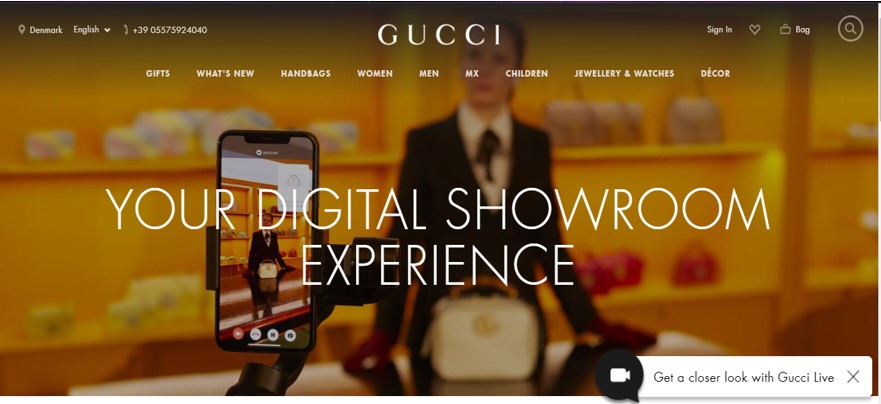
With millennials and Gen Z set to soon account for the majority of luxury spending, luxury brands have pivoted to embrace new trends and trendsetters.
Streetwear, hip hop, and sneaker culture have made an indelible mark on the world of luxury. From Louis Vuitton’s collaboration with Supreme and employment of the late Virgil Abloh, to Dior collaborating with Travis Scott and Nike, to Balenciaga working with adidas and Kanye West—luxury brands are recognizing that to maintain relevance, they need to embrace the next generation.
RELATED: Drop Culture: The Wild History & Exciting Future of Product Drops
Product drops and brand collaborations have been absolutely key to this transformation of the luxury market.
Product drops are the release of products that are either scarce in availability (i.e. available for 24 hours only) or scarce in quantity (i.e. dropping in very limited quantities). These are often paired with collaborations—either between two brands or between a brand and a celebrity or designer—to further boost hype.
The product drop strategy popularized by Supreme throughout the 2000s and 2010s is now common practice for luxury brands.
Product drops and collaborations are enabling luxury brands to:
- Build awareness, affinity & community among new audiences: 67% of consumers report increased brand affinity after product drops
- Leverage scarcity marketing without discounting products: 45% of consumers are interested in product drops because they value access to products that are difficult to obtain
- Boost anticipation, hype & engagement: Brand and celebrity collaborations consistently generate massive media attention and social media buzz
RELATED: The 5 Powerful Benefits of Product Drop Marketing
Drops and collaborations are especially appealing to the younger consumers who are becoming the dominant force in luxury. The average age of luxury shoppers has fallen from 48 to 34. And millennials and Gen Z are expected to account for 50% of the global personal luxury goods market by 2025.
RELATED: 23 Successful Product Drop & Brand Collaboration Examples for Inspiration
Launching hyped collabs lets luxury brands leverage scarcity marketing and deliver exclusivity online.
Tiffany & Co., for example, ramped up the scarcity marketing during their recent limited-edition collaborative drop with Fendi. They set up a virtual waiting room with a timer that counted down for days to the moment of the drop.
This helped build anticipation and hype for the drop, while also serving another crucial purpose: preventing website crashes and site errors.
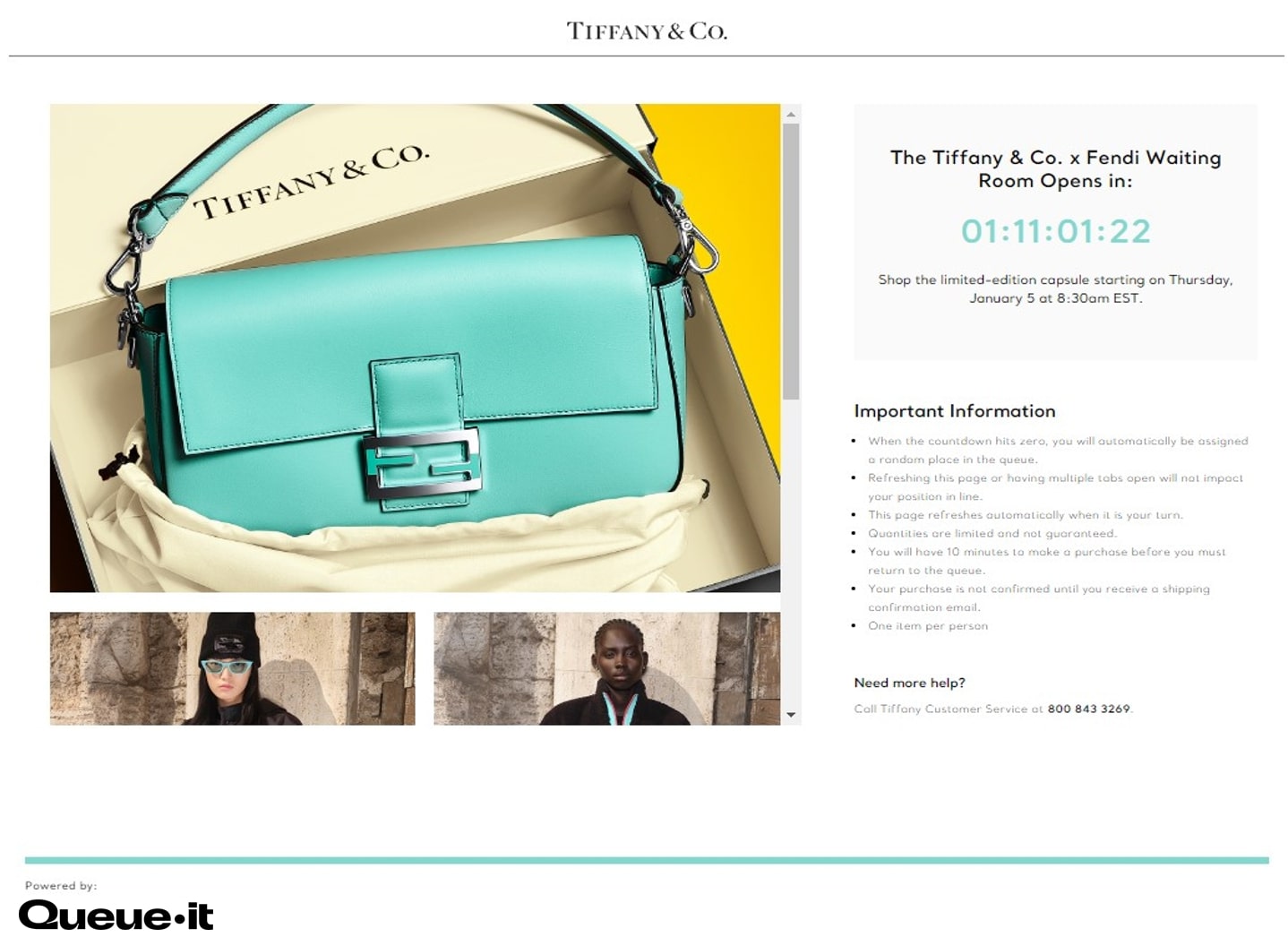
Set your product drops up for success with your free interactive checklist

If you’re creating hype around sales of exclusive luxury products, your website and app had better be prepared. Online traffic spikes are a major driver behind why websites crash.
A slow or crashed website means lost sales, of course. But lost sales only account for about 22% of the overall business damage. Far worse is the reputational damage and resulting sales lost in the future.

Nobody enjoys shopping on a website where they can’t check out. Especially when running a collaboration, that first touchpoint with a future client is critical.
What happens when shoppers are met with a poor shopping experience?
79% of them won’t return to buy, and 44% will tell friends and family about the experience.
RELATED: The Cost of Downtime: IT Outages, Brownouts & Your Bottom Line
Shoppers bring high consumer expectations for the quality of retail experience they’ll have with luxury brands. A poor experience will be that much more detrimental to your brand.

It’s critical you deliver the experience your clients expect, no matter the demand placed on your systems.
But this is easier said than done. Web traffic overwhelms even the world’s largest online retailers. Server scaling and timed marketing campaigns are imperfect solutions on their own.
Some concrete steps to build performance into your web application include:
- Optimizing your content delivery network (CDN)
- Toggling features
- Running load tests
- Controlling traffic inflow
In the below video, you can see how a virtual waiting room gives shoppers a seamless, branded experience and taps into social proof to generate hype. Managing traffic with a virtual waiting room is one way brands have been safeguarding their clients’ luxury shopping experience.
Related: How to Improve Your Ecommerce User Experience with a Virtual Waiting Room
Online is certainly a vital sales channel for luxury brands. But even if a sale isn’t made directly through a website or app, online channels still play a critical role in moving customers through the buying journey.
On average, a luxury shopper will have nine points of contact with a brand before he or she finally purchases, according to McKinsey. And research from Adobe shows 74% of luxury customers use multiple channels when shopping.
Shoppers may seek advice from peers offline or on social media, read reviews on various blogs, and finally complete their purchase in-store or directly from a retailer’s website.
Major luxury brands use their websites, social media accounts, and digital marketing to expand the scope of the luxury brand experience. They do this with high-quality content production, including:
- Short films
- Celebrity and designer interviews
- Music playlists and DJ sets
- Digital events
- Podcasts
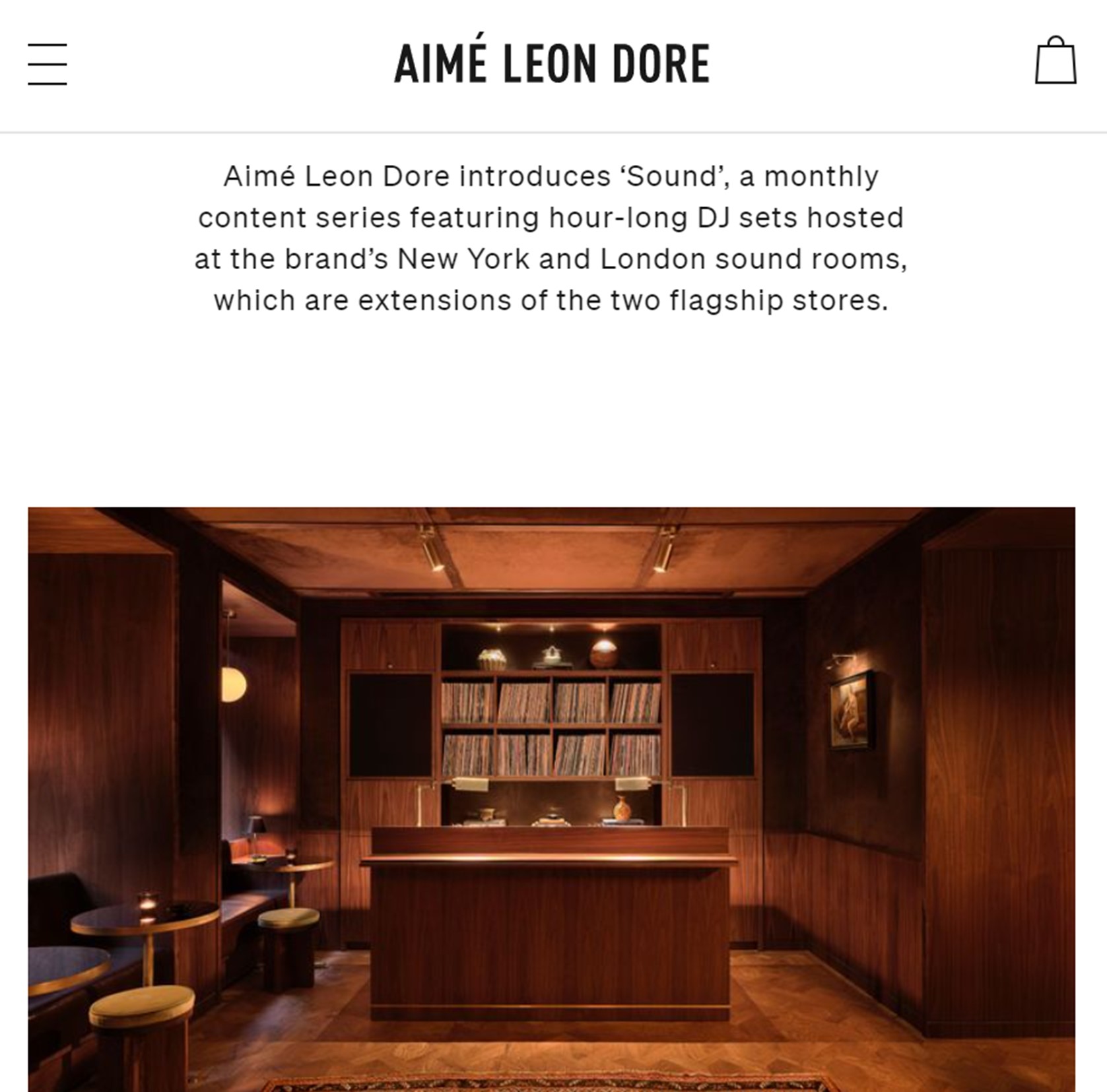
The customer experience of luxury brands has actually expanded with the rise of digital. The content becomes accessible to all, but the products remain exclusive to the elite few.
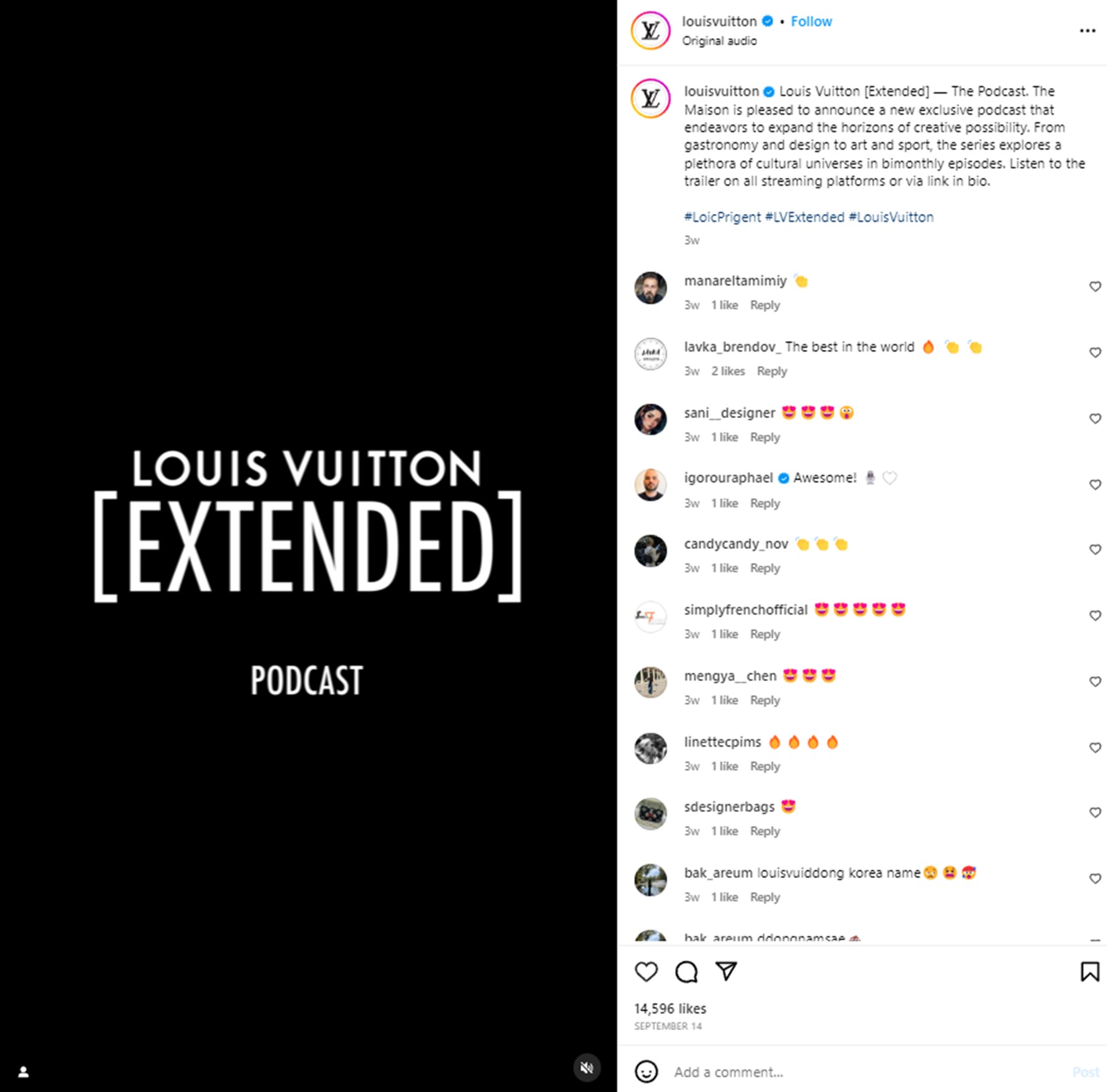
The content can also seamlessly combine with sales.
An omnichannel approach is key. Craft your digital experience with this in mind.
For instance, high-end shoppers rate product availability as the most important factor when deciding to shop online or offline. And they want the ability to reserve a product online for purchase in store.
To deliver a luxury customer experience, you should ensure your stores and online shops work seamlessly together.
Show inventory status from local stores in the product catalog. Allow for BOPIS (buy online pickup in store), which shoppers have relied on heavily in retail more broadly.
While experiential in-store retail will remain essential for luxury brands, digital channels will continue to evolve both as sources of inspiration and as sales channels – elevating ecommerce to a new level.
The question is whether that level is the type of luxurious experience your clients expect.
The luxury world plays by different rules to the rest of the retail world. As luxury veterans Kapferer and Bastien describe in the The Luxury Strategy , luxury thrives through the “antilaws of marketing”. These include:
- “Keep nonenthusiasts out”: Ensure your luxury goods go only to the most dedicated customers who believe in the brands’ values
- “Make it difficult for clients to buy”: Ensure your products are exclusive and require work to acquire. This not only makes them more exclusive, but also means customers will value the items more
These “laws” are simple enough to achieve for physical stores. But how are luxury brands catering to enthusiasts and making shopping difficult on a website, where products are available to all?
They’re embracing an invite-only strategy.
The invite-only strategy involves brands essentially gating access to their products. This means retailers get to choose who gets the chance to buy items, or customers have to request access.
It brings the exclusive luxury shopping experience into the digital realm.
Luxury activewear company WONE, for instance, has specific items on its site that customers need to request access for in order to buy.
“So far, this approach is working,” writes Forbes contributor Kaleigh Moore. “Despite the fact that WONE has run zero paid marketing campaigns, the brand’s products are selling out, and customers are impressed with the highly personalized approach to customer relationships.”
Likewise, instead of an “Add to cart”, Chanel’s product pages ask that you “contact an advisor” to purchase their products.
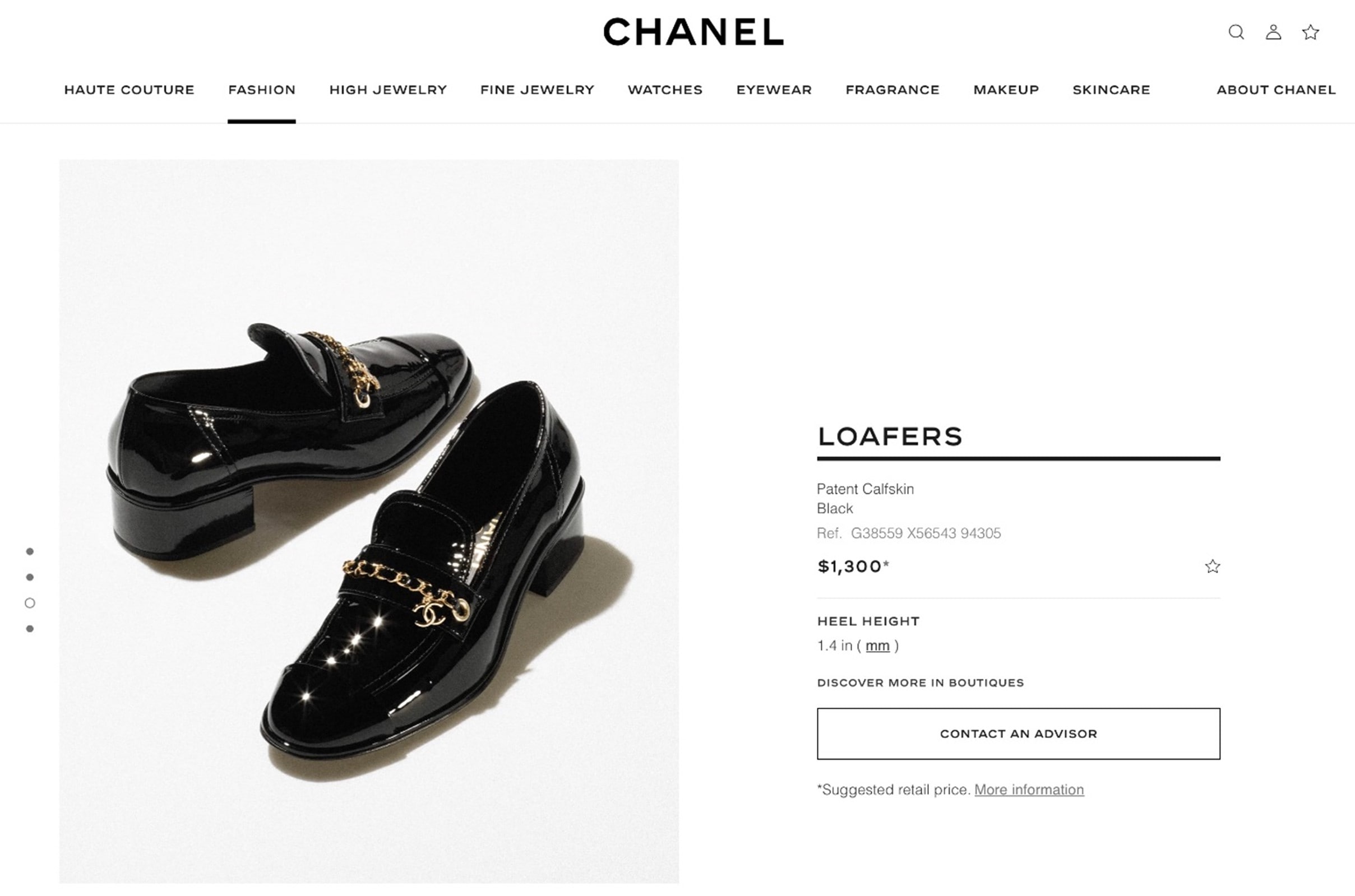
Customers can’t even buy Hermès’ coveted Birkin bag without an invitation. There are dozens of online guides on the steps you need to take to be “invited” to purchase the $10,000 to $30,000 bag.
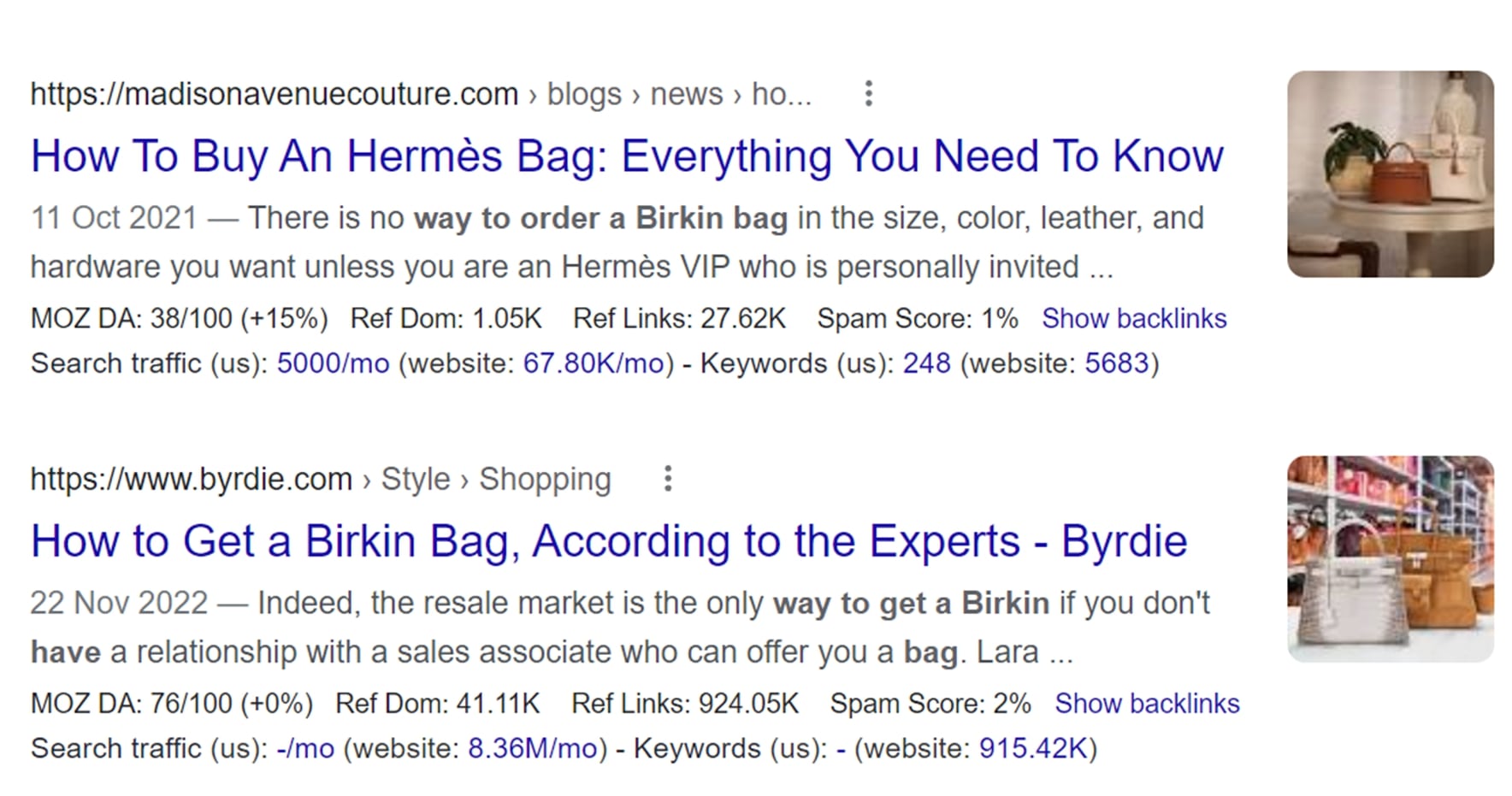
You can run exclusive sales or product drops for your high value customers using an invite-only waiting room.
By setting up an invite-only waiting room to sit in front of specific pages, you can allow access only to the customers you choose.
This can be used as an exclusive offer you send out to valuable customers, a benefit for people who put themselves on waitlists for items, or just a way to ramp up the exclusivity and mystery around a new product.
You want customers to ask: “How can I get an invite to buy this item?”
This transforms your products from something you wish customers would buy into something customers wish they could buy.
It’s luxury scarcity marketing 101. Just taken into ecommerce.
(This blog has been updated since it was originally written in 2021).